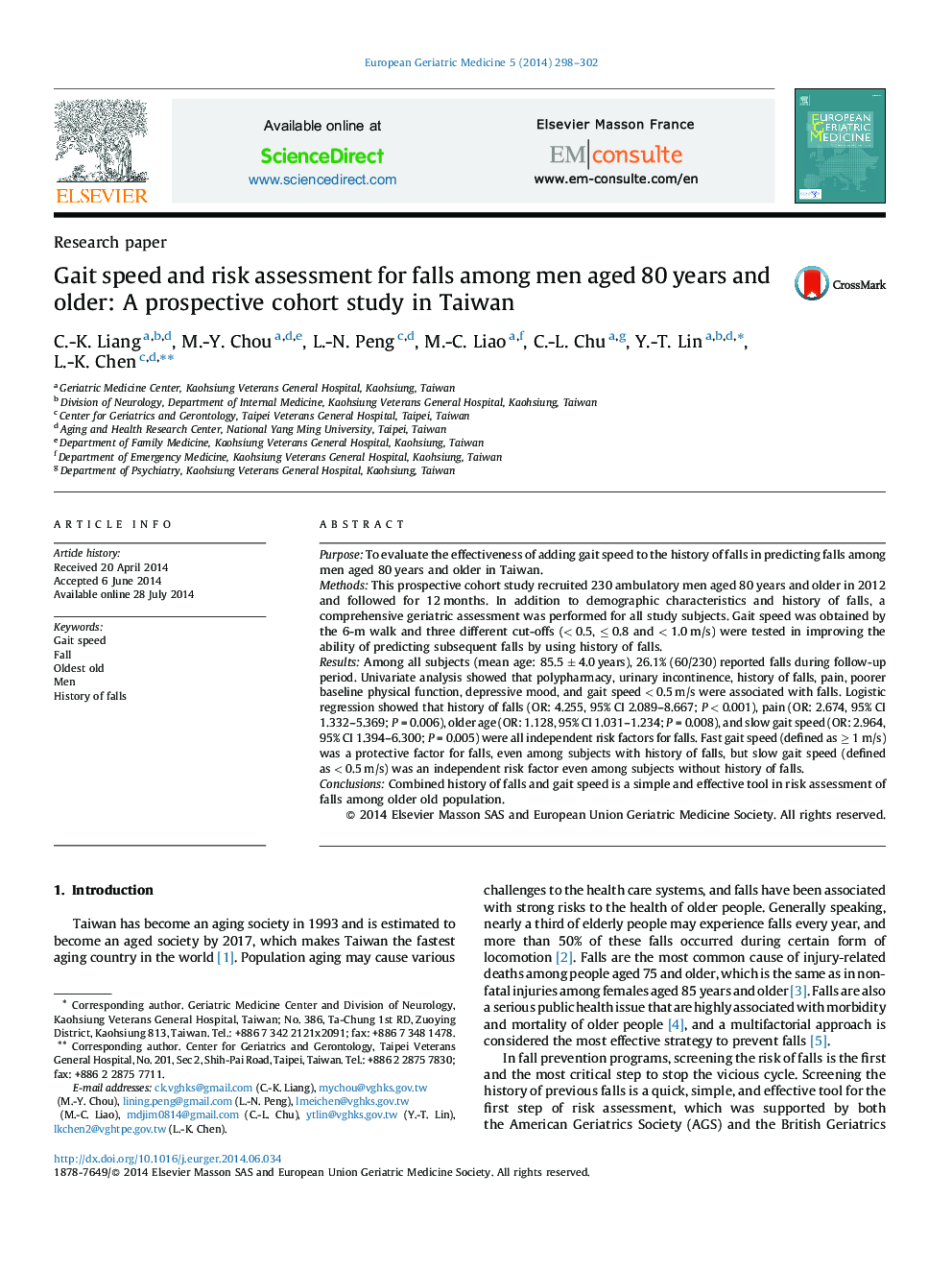| Article ID | Journal | Published Year | Pages | File Type |
|---|---|---|---|---|
| 3324178 | European Geriatric Medicine | 2014 | 5 Pages |
PurposeTo evaluate the effectiveness of adding gait speed to the history of falls in predicting falls among men aged 80 years and older in Taiwan.MethodsThis prospective cohort study recruited 230 ambulatory men aged 80 years and older in 2012 and followed for 12 months. In addition to demographic characteristics and history of falls, a comprehensive geriatric assessment was performed for all study subjects. Gait speed was obtained by the 6-m walk and three different cut-offs (< 0.5, ≤ 0.8 and < 1.0 m/s) were tested in improving the ability of predicting subsequent falls by using history of falls.ResultsAmong all subjects (mean age: 85.5 ± 4.0 years), 26.1% (60/230) reported falls during follow-up period. Univariate analysis showed that polypharmacy, urinary incontinence, history of falls, pain, poorer baseline physical function, depressive mood, and gait speed < 0.5 m/s were associated with falls. Logistic regression showed that history of falls (OR: 4.255, 95% CI 2.089–8.667; P < 0.001), pain (OR: 2.674, 95% CI 1.332–5.369; P = 0.006), older age (OR: 1.128, 95% CI 1.031–1.234; P = 0.008), and slow gait speed (OR: 2.964, 95% CI 1.394–6.300; P = 0.005) were all independent risk factors for falls. Fast gait speed (defined as ≥ 1 m/s) was a protective factor for falls, even among subjects with history of falls, but slow gait speed (defined as < 0.5 m/s) was an independent risk factor even among subjects without history of falls.ConclusionsCombined history of falls and gait speed is a simple and effective tool in risk assessment of falls among older old population.
